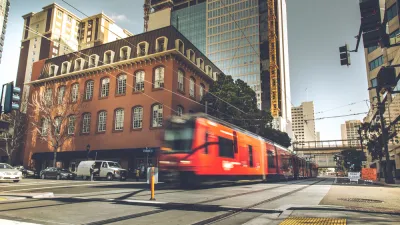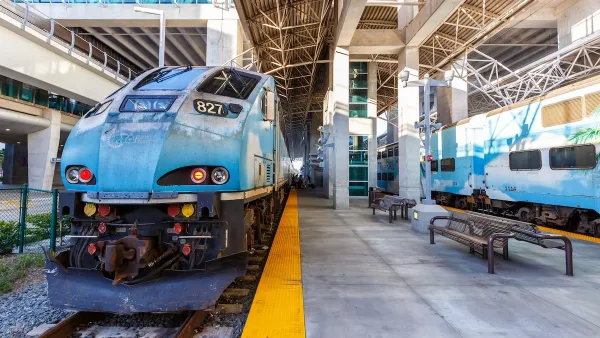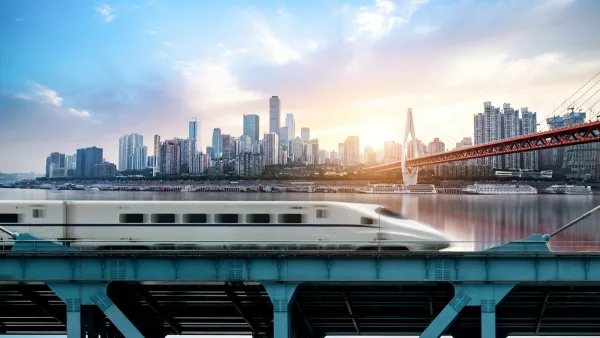Despite slowing population growth statewide, officials believe the region will "grow into" the new rail system if cities promote dense development around transit stations.

[Updated June 1, 2021] The success of an ambitious $160-billion plan for public transit and high-speed rail in San Diego depends on the region's future development, writes Joshua Emerson Smith in the San Diego Union-Tribune. With San Diego's—and California's—population growth rate slowing to a near halt, cities must "usher in dense urban development around transit stations" to make the new rail system effective. "Population growth is a bit less important than where that growth occurs," says Ethan Elkind, director of the climate program at UC Berkeley’s Center for Law, Energy and the Environment.
Critics of the plan say that "San Diego doesn’t have much of a chance of building the type of urban communities that would justify tens of billions of dollars in transit projects." Local communities, which "have bitterly fought housing requirements in court," have for decades challenged new multi-family housing construction in and around San Diego. Unlike other urban rail systems, San Diego's "would service a region with dispersed employment hubs, often featuring office parks with plentiful parking." Community activists also have concerns about displacement, access, and making urgent improvements to existing transit systems. "Advocates for low-income communities say they will support SANDAG’s new transportation plan, but only if the final version prioritizes immediate upgrades to the region’s bus and trolley systems."
"The phasing of various projects is still being determined, as is the financing. A tax initiative that spells out both could be put to voters as early as 2022."
FULL STORY: San Diego’s high-speed rail plan hinges on urban density as population growth wanes

Analysis: Cybertruck Fatality Rate Far Exceeds That of Ford Pinto
The Tesla Cybertruck was recalled seven times last year.

National Parks Layoffs Will Cause Communities to Lose Billions
Thousands of essential park workers were laid off this week, just before the busy spring break season.

Retro-silient?: America’s First “Eco-burb,” The Woodlands Turns 50
A master-planned community north of Houston offers lessons on green infrastructure and resilient design, but falls short of its founder’s lofty affordability and walkability goals.

Test News Post 1
This is a summary

Analysis: Cybertruck Fatality Rate Far Exceeds That of Ford Pinto
The Tesla Cybertruck was recalled seven times last year.

Test News Headline 46
Test for the image on the front page.
Urban Design for Planners 1: Software Tools
This six-course series explores essential urban design concepts using open source software and equips planners with the tools they need to participate fully in the urban design process.
Planning for Universal Design
Learn the tools for implementing Universal Design in planning regulations.
EMC Planning Group, Inc.
Planetizen
Planetizen
Mpact (formerly Rail~Volution)
Great Falls Development Authority, Inc.
HUDs Office of Policy Development and Research
NYU Wagner Graduate School of Public Service




























